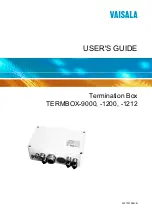
– 155 –
5
SNMP Commands
SNMP commands control access to this switch from management stations
using the Simple Network Management Protocol (SNMP), as well as the error
types sent to trap managers.
SNMP Version 3 also provides security features that cover message integrity,
authentication, and encryption; as well as controlling user access to specific
areas of the MIB tree. To use SNMPv3, first set an SNMP engine ID (or accept
the default), specify read and write access views for the MIB tree, configure
SNMP user groups with the required security model (i.e., SNMP v1, v2c or v3)
and security level (i.e., authentication and privacy), and then assign SNMP
users to these groups, along with their specific authentication and privacy
passwords.
Table 27: SNMP Commands
Command
Function
Mode
General SNMP Commands
Enables the SNMP agent
GC
Sets up the community access string to permit access
to SNMP commands
GC
Sets the system contact string
GC
Sets the system location string
GC
Displays the status of SNMP communications
NE, PE
SNMP Target Host Commands
Enables the device to send SNMP traps (i.e., SNMP
notifications)
GC
Specifies the recipient of an SNMP notification
operation
GC
Enables the device to send SNMP traps (i.e., SNMP
notifications) when a link-up or link-down state change
occurs
IC
Enables the device to send SNMP traps (i.e., SNMP
notifications) when a dynamic MAC address is added or
removed
IC
Shows if SNMP traps are enabled or disabled for the
specified interfaces
PE
SNMPv3 Engine Commands
Sets the SNMP engine ID
GC
Adds an SNMP group, mapping users to views
GC
Adds a user to an SNMP group
GC
















































